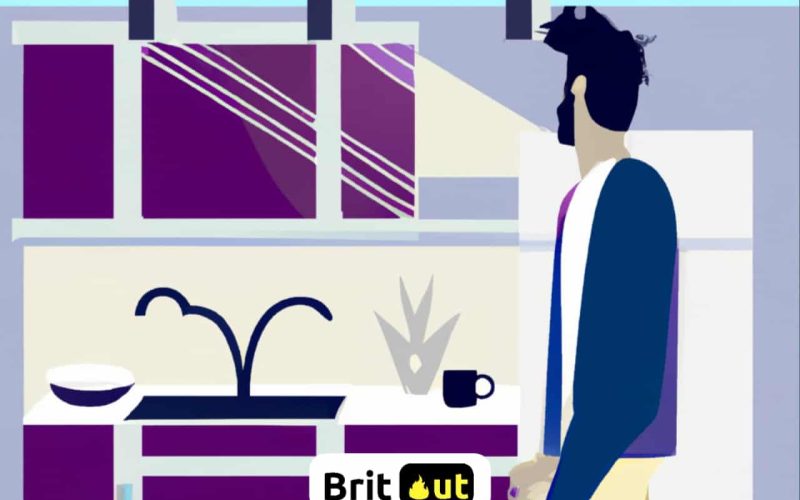When it comes to kitchen, silverwares can give any dining setting a touch of elegance. But after time and with use, the silver plating may come off, revealing the metal beneath. This begs the question of whether it is safe to use a tarnished silver-plated object to serve food.
You may have encountered this difficulty yourself if you enjoy entertaining and hosting dinner parties.
It’s possible that a lovely silver-plated serving platter you inherited has seen better days, or the plating on a treasured silver-plated spoon you’ve been using for years is beginning to wear off.
The last thing you want is to serve your guests food that could potentially be harmful to their health.
In this article, we’ll look into whether it’s okay to serve food on tarnished silver plate.
Is Worn Silver Plate Safe to Use?
When it comes to its suitability for use with food, worn silver plate can be a bit of a grey area.
But then on the other hand, the silver plating in it creates a barrier between the metal and the food, making it suitable for use with food. So, it’s good, right?
Well, the problem however, is that, if the underlying metal is exposed when the silver plating deteriorates and leaches into the food, it could be harmful for using.
So, is it safe to use worn silver plate for serving food? The answer is: it depends.
The underlying metal’s composition ultimately determines how safe worn silver plate is.
Generally speaking, a metal is regarded safe for use with food if the underlying metal is formed of a non-toxic substance like stainless steel or nickel.
However, if the underlying metal is formed of a poisonous substance, such as lead or cadmium, it should be avoided because it is not suitable for use in food.
It’s important to remember that using overly worn silver plate for food is still not recommended, even if the underlying metal is made of a non-toxic substance.
In order to prevent the underlying metal from coming into contact with the food, the silver plating acts as a barrier. When the plating begins to deteriorate, the metal may come into touch with the food and perhaps leak into it, which is bad.
You should also note that there are some foods that are normally not advisable to use with even sterling silver. Some of them include egg, tomatoes, citrus, salts and a list of other acidic foods.
Aside from all of this, using Silver-Plated Flatware is advisable even for Everyday use.
How to determine the underlying metal
Determining the underlying metal of your silverware is crucial to understanding if it’s safe to use for food. Here are a few ways you can do this:
Conduct a Magnetic test
You can identify the base metal of your silverware using a quick magnet test. If a magnet sticks to the object, it probably contains stainless steel or another ferromagnetic metal as the underlying metal. If the magnet doesn’t stick, nickel or another non-magnetic metal is probably what’s underneath.
Use a Metal Testing Kit
You can also use a metal-testing kit to find out what metal is underneath your silverware. In these kits, the metal is often treated with a tiny drop of acid, which reacts with the metal to give a particular hue. The composition of the metal can then be determined by comparing the hue to a chart.
If you don’t know how to use a metal test kit, here’s how:
Do Professional testing
You could also take your silverware to a specialist for testing if you’re uncertain about the outcomes of the magnet test or metal-testing equipment. A jeweler or metallurgist can make use of a range of instruments and methods, including optical emission spectrometry and x-ray fluorescence, to identify the underlying metal.
Related: Can we eat non veg in silver plate?
This is unneccessary though, but is worth mentioning.
It’s important to take the time to find the base metal of your silverware, regardless of the method you use. As we said earlier, your metal composition makes the conclusion for whether using worn silver plate is safe to use.
It’s also important to keep in mind that the silverware itself may occasionally be marked or stamped with the name of the metal it is made of. You might find markings like “sterling,” “silverplate,” or “nickel silver,” for instance. These markings can give you important details about the underlying metal’s make-up and assist you in determining its safety.
How to Determine if your Worn Silver Plate is Safe to Use
As an expert, I recommend taking the following steps to determine if a piece of worn silver plate is safe to use:
- Check for lead content: As we mentioned above, silver plated flatwares that contain lead as their underlying metals are generally not safe. So if you want to use a worn silver plated flatware, you want to check if they contain lead or nickel. How to check for lead content? We already mentioned this in the previous section.
- Look for visible damage or wear: Check the item for any obvious dings, scratches, or sections that have been worn away. These might affect the piece’s integrity and render it risky to utilize.
- Consult a professional: It’s always preferable to get professional advice if you have any doubts about the safety of a piece of tarnished silver plate. You might be able to learn more about the object and its past from jewelers or antique dealers.
- Quit it: If you’d spend so much time researching, and checking your flatwares and cookwares are safe for eating, it might just be the right time to change them.
By taking these steps, you can make an informed decision about whether or not to use a piece of worn silver plate.
How to Care for Worn Silver Plate
Once you’ve determined that a piece of worn silver plate is safe to use, it’s important to take proper care of it to ensure it lasts as long as possible. Here are a few tips for caring for worn silver plate:
- Clean and polish regularly: A silver polishing cloth or little water and a light detergent can be used to clean and polish worn silver plate. Avoid using harsh cleaners since they can cause the silver plating to wear off even more quickly.
- Proper storage: Store tarnished silver plate in a cool, dry location and keep it away from strong chemicals and extremely hot or cold temperatures to prevent further wear and damage.
- Handle with care: Handle worn silver plate carefully to prevent dents or scratches as it may be more fragile than solid silver..
By following these tips, you can keep your worn silver plate looking great for years to come.
Conclusion
The safety of worn silver plate for food use depends on the composition of the underlying metal and the condition of the silver plating.
You can decide whether your silverware is safe to use with food by carefully examining the underlying metal and the state of the piece.






